 |
|||||||||||||||
— Captive and Aborted Flights, March through May 1959 — |
||
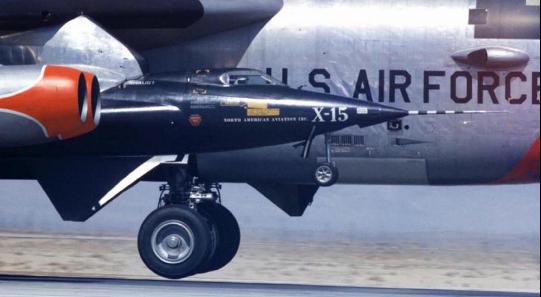 |
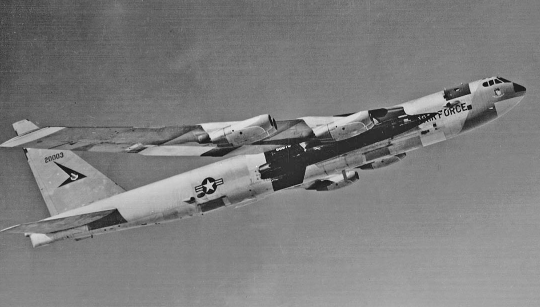 |
||||
The very first moment the X-15 left the runway for the first time, at the start of planned captive flight 1-C-1 on 10 Mar. 1959. Note the X-15 landing gear remains down. North American Aviation |
|||||
B-52 no. 003 does a high angle liftoff for the first captive flight. North American Aviation |
|||||
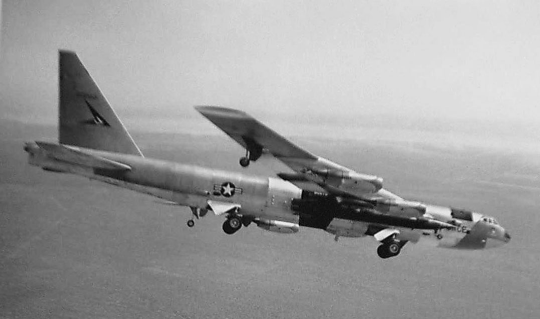 |
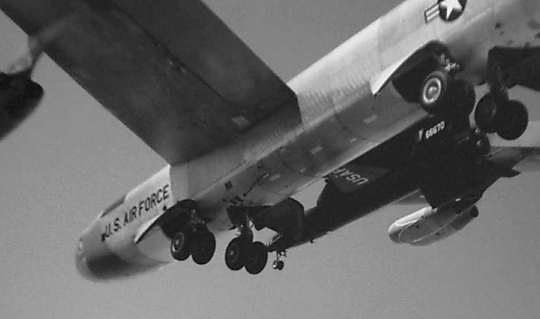 |
|||
The B-52 carries the X-15 safely home during the first captive flight. North American Aviation |
Coming in for landing at the completion of the first captive flight. North American Aviation |
|||
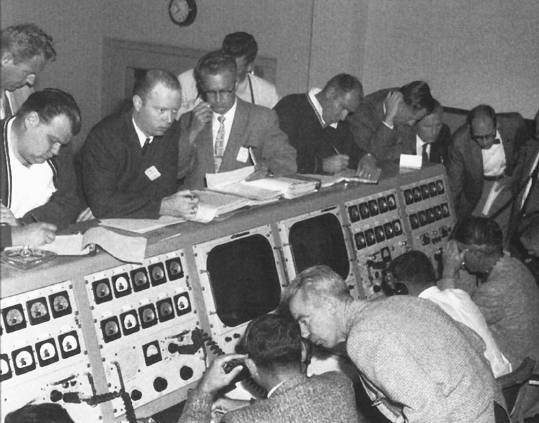 |
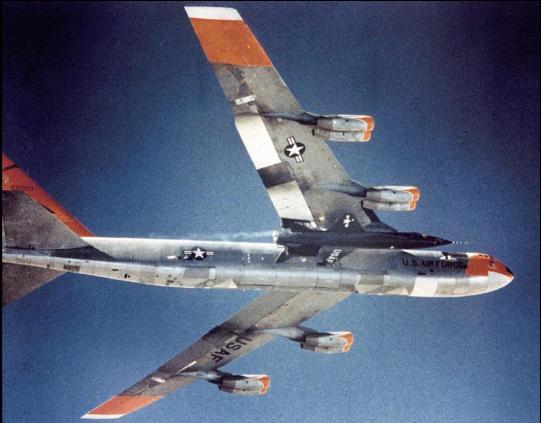 |
|||
A pensive control room during what would be the second aborted attempt at an X-15 glide flight with mission 1-A-3 on 10 Apr. 1959. North American Aviation |
The third launch attempt on 21 May 1959 with mission 1-A-4. An auxiliary power unit failed, and the X-15 with Crossfield had to return under the B-52's wing yet again. North American Aviation |
|||
— Flight 1 (Mission 1-1-5) 8 June 1959 — |
||
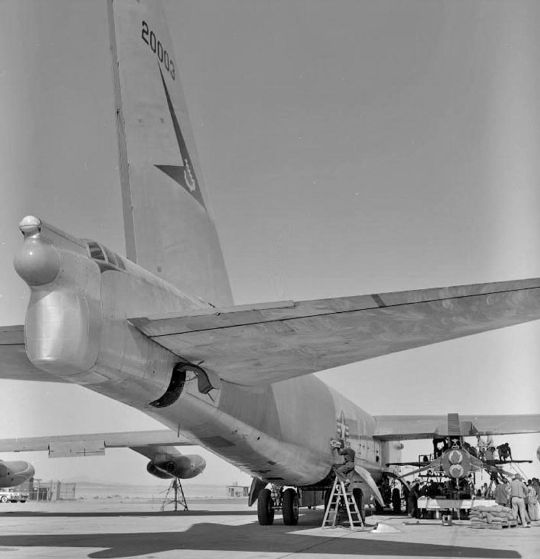 |
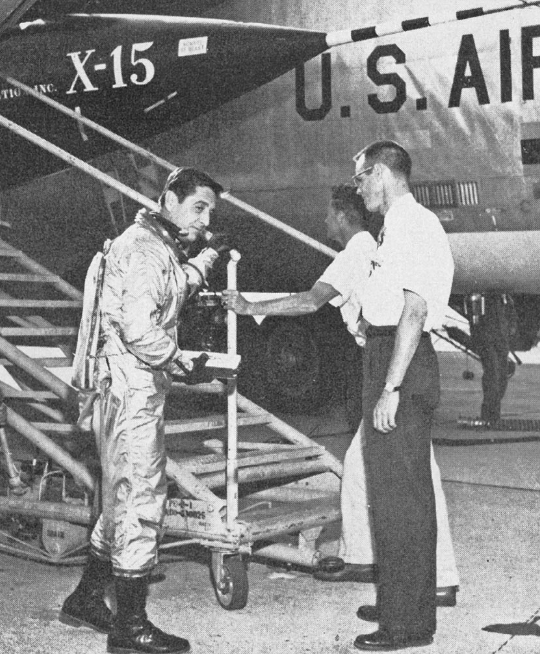 |
|||||
Technicians scramble to finish last minute preparations for flight. X-15 no. 1 is installed on the B-52's right wing pylon, and the twin stack LR-11 rocket engines are visible in the rocket plane's tail, although they will not be used on this unpowered glide flight. North American Aviation |
||||||
Scott Crossfield heads up the stairs to enter the cockpit for the first flight. North American Aviation |
||||||
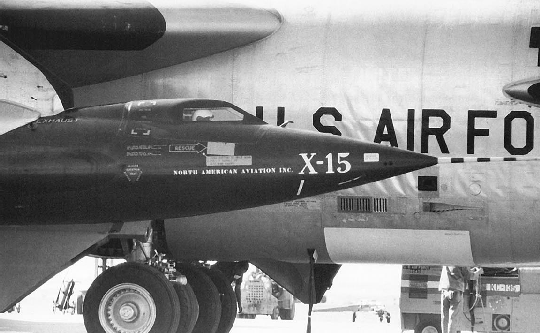 |
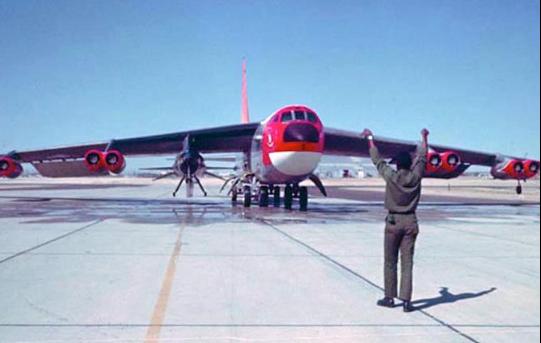 |
|||
Crossfield can be seen in the cockpit of X-15 no. 1 on 8 Jun. 1959. A technician is putting away the engine starter cart on the far side of the B-52. North American Aviation |
||||
An airman signals the B-52 mothership, with the X-15 under wing, into position for taxi. Edwards History Office |
||||
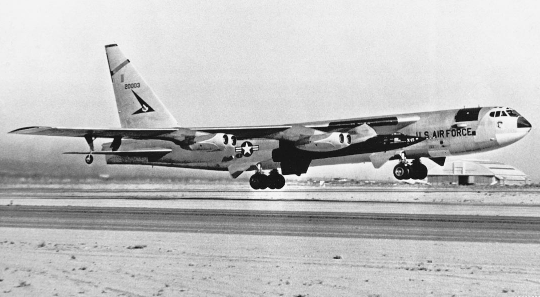 |
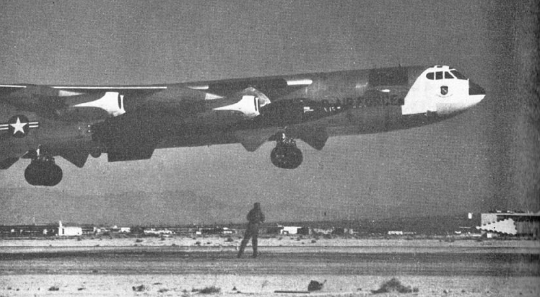 |
|||
Off the runway for the historic first mission at 08:00 am Pacific Time. North American Aviation |
The mothership lifts off with its X-15 cargo on what will be the first glide flight. North American Aviation |
|||
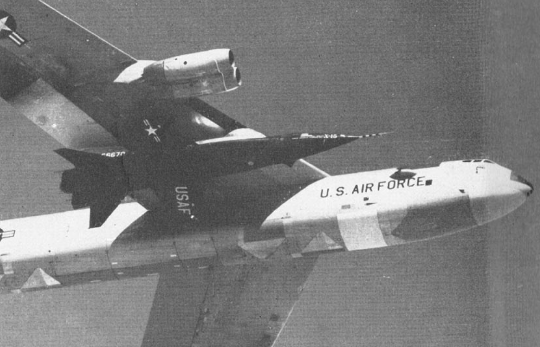 |
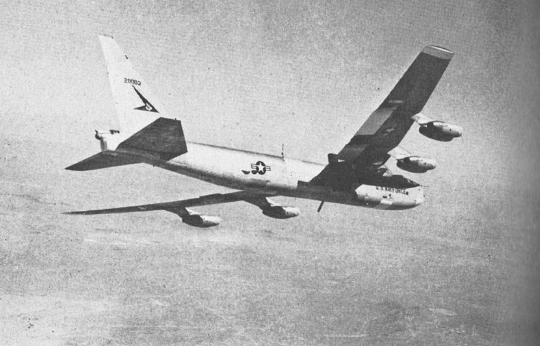 |
|||
B-52 no. 003 and X-15 no. 1 take flight. North American Aviation |
Turning into launch position. North American Aviation |
|||
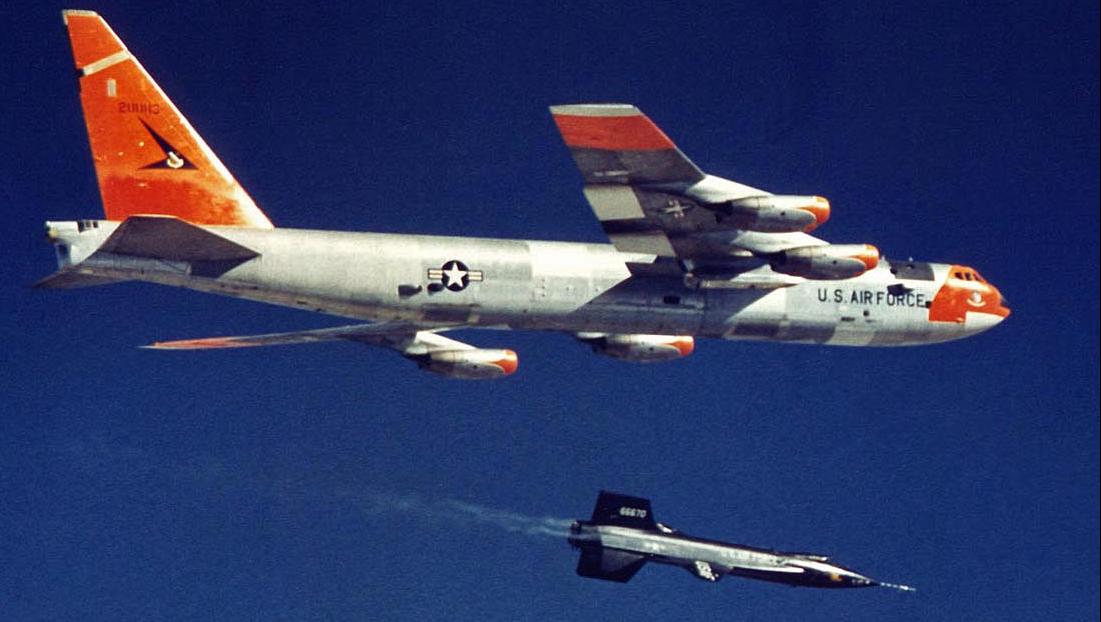 |
||
Scott Crossfield and X-15 no. 1 drop away from the mothership at 08:38:40 am on 8 Jun. 1959. The X-15 is flying free for the first time. Mission duration was 4 min. 56.6 sec North American Aviation |
||
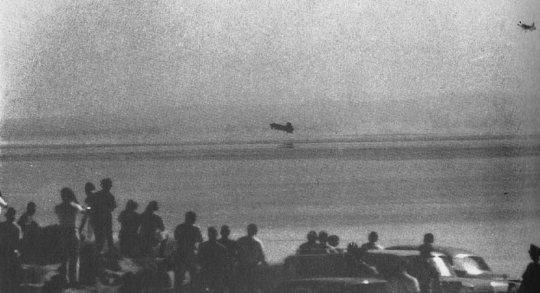 |
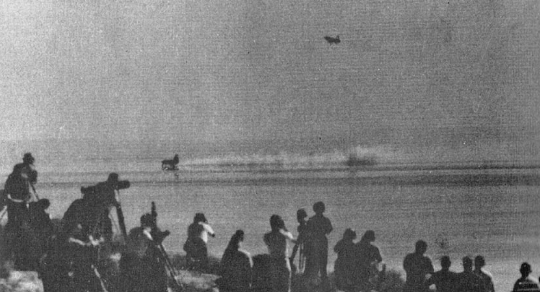 |
|||
(above and below) Landing sequence for flight 1-1-5 with the crowd of reporters covering the mission. The Piasecki H-21 Workhorse can be seen high above the X-15 in the background in the two images above. Below are images taken from the helicopter, showing the moment of touchdown, then the rollout along Rogers Dry Lake. North American Aviation |
||
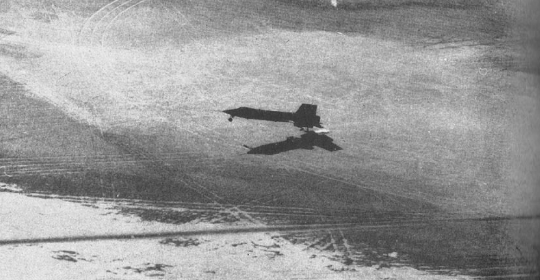 |
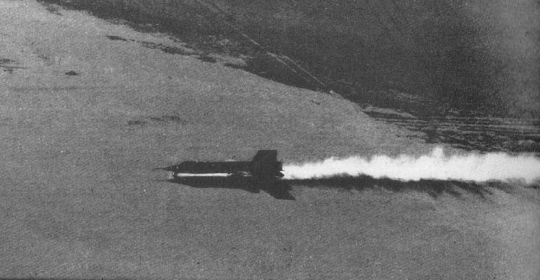 |
|||
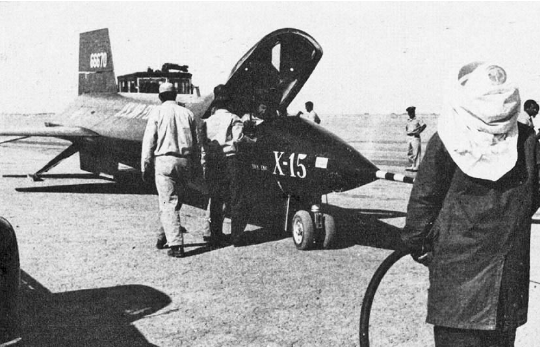 |
||||
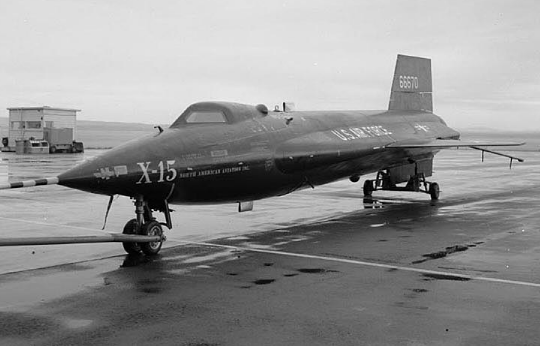 |
||||
Post landing, Crossfield is preparing to exit the cockpit. North American Aviation |
X-15 no. 1 is towed back to the NASA ramp after its first glide flight. North American Aviation |
|||
— Flight 2 (Mission 2-1-3) 17 September 1959 — |
||
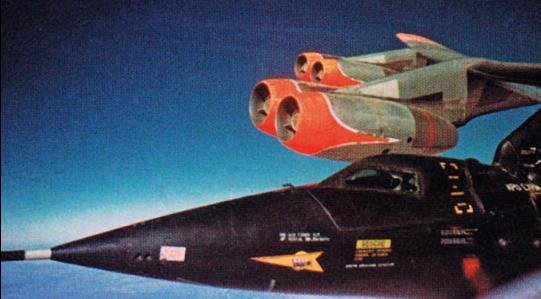 |
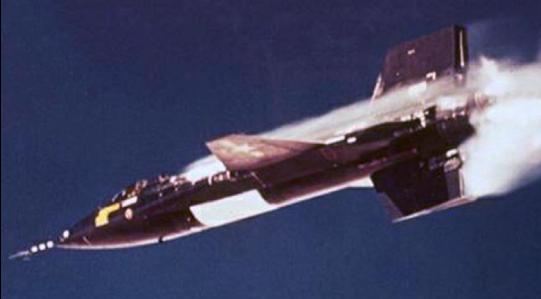 |
|||
Crossfield can be seen in the X-15 no. 2 cockpit prior to release from the B-52. North American Aviation |
After launch at 08:08:48 am, all 8 chambers of the LR-11s are quickly fired. Edwards History Office |
|||
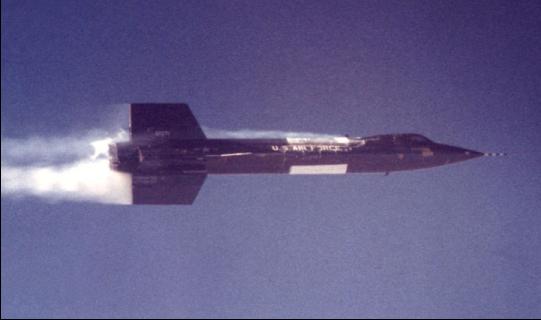 |
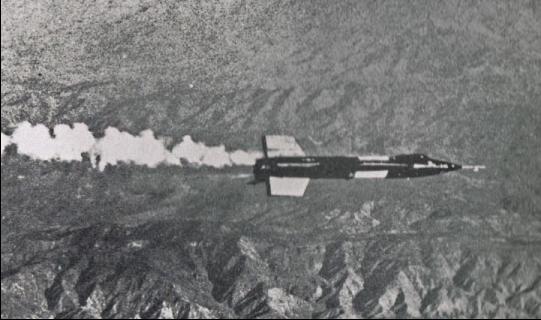 |
|||
The X-15 under power with the LR-11 rocket engines for the first time. Below the X-15 are the San Gabriel Mountains, which serve as the southern border of the Mojave Desert. North American Aviation |
||
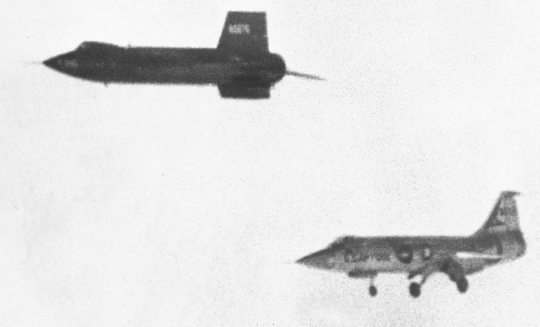 |
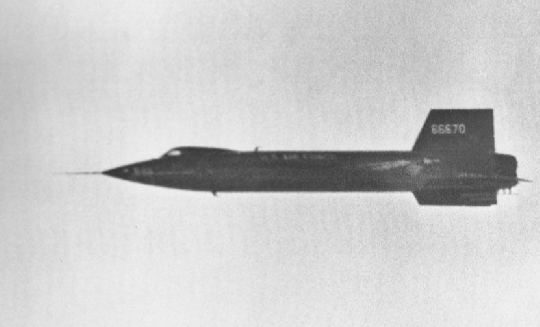 |
|||
(above and below) Landing sequence for the first powered flight of the X-15 program. The rocket plane covered 88.4 miles, and reached Mach 2.11 at an altitude of 52,341 feet. Associated Press |
||
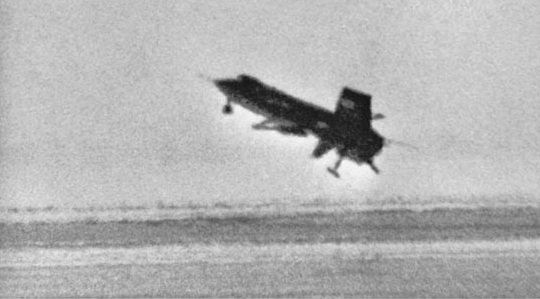 |
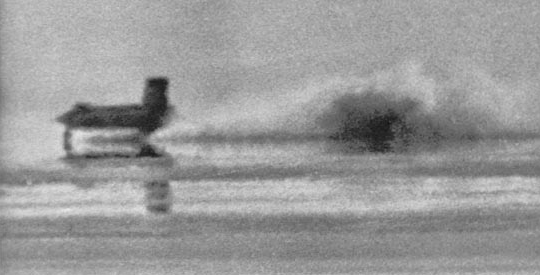 |
|||
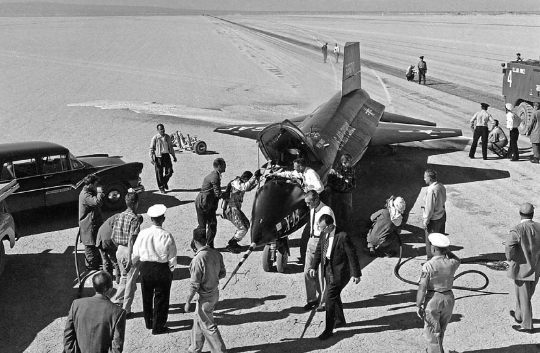 |
||||
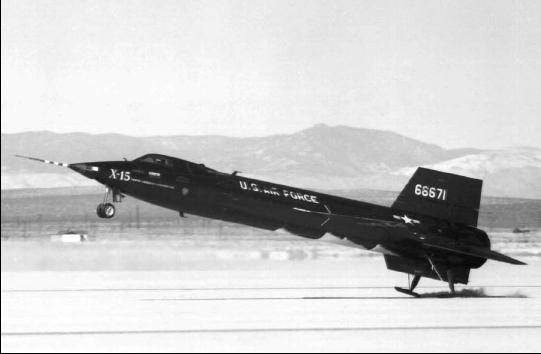 |
||||
Crossfield has just jumped down out of the cockpit of X-15 no. 2, and is surrounded by personnel from NAA, NASA, and the USAF. Note that the X-15 veered off the centerline at the end of its landing rollout. North American Aviation |
||||
Touchdown of the first powered flight of the X-15 program at 8:17:59 am. North American Aviation |
||||
— Flight 3 (Mission 2-2-6) 17 October 1959 — |
||
 |
||
X-15 no. 2 launches at 10:13:07 on 17 Oct. 1959 for the second powered flight of the program. Crossfield achieved Mach 2.15 (1,419 mph) at 61,781 feet altitude. North American Aviation |
||
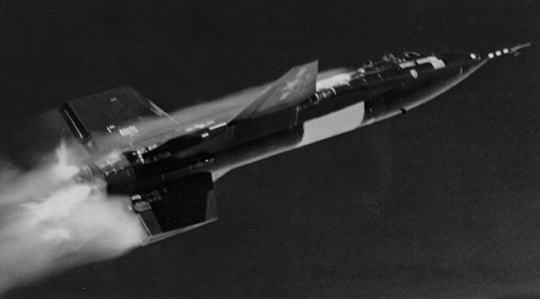 |
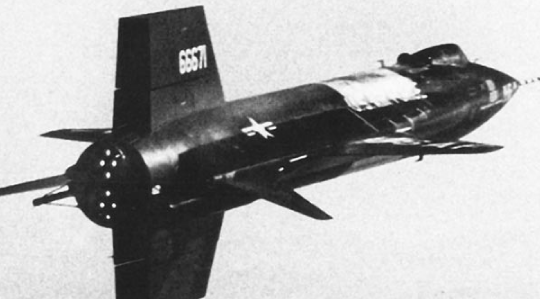 |
|||
Condensation streams off the X-15 after engine ignition. Edwards History Office |
The glow can be seen from the 8 chambers of the two LR-11s stacked atop each other. Edwards History Office |
|||
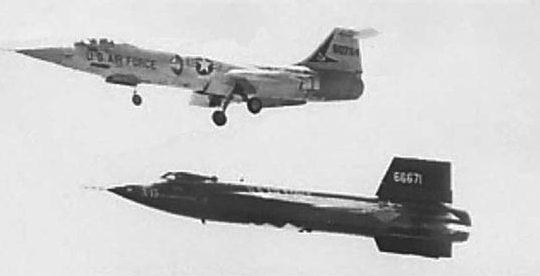 |
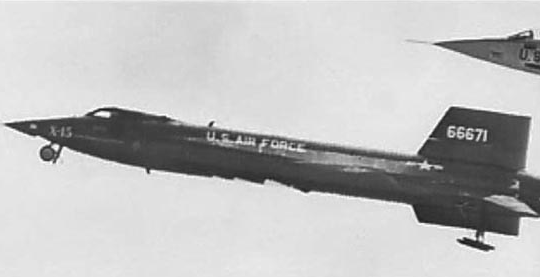 |
|||
X-15 no. 2 comes in for landing on mission 2-2-6 on 17 Oct. 1959. Associated Press |
The rear skids are down, and the nose gear is about half way deployed. Associated Press |
|||
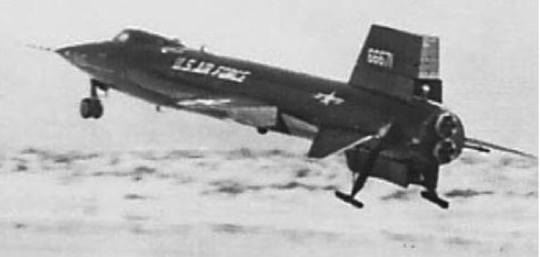 |
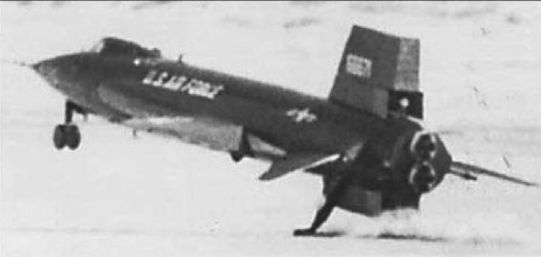 |
|||
Landing gear is down and locked as Crossfield approaches the lakebed (left), and the speed brakes can be seen extending as he touches down (right). Associated Press |
||
— Flight 4 (Mission 2-3-9) 5 November 1959 — |
||
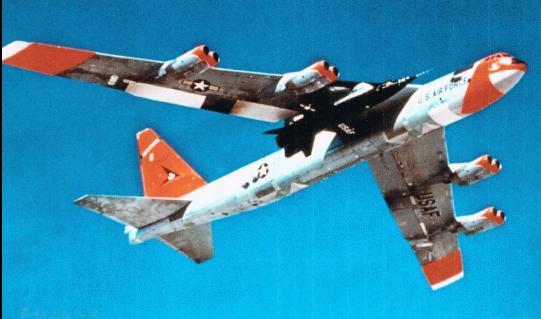 |
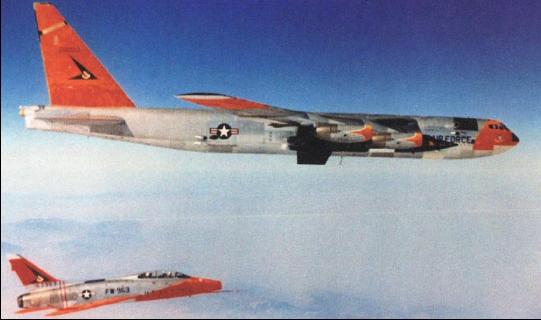 |
|||
Over the course of the X-15 program, the aircraft was carried aloft a total of 336 times, but only accomplished 199 actual releases from the B-52. There were 12 scheduled captive flights, and 125 other times the mission was aborted prior to launch for reasons ranging from mechanical and electrical, or simply the weather turning bad. That was the case with the above mission, which became designated 2-A-8 on the forth attempted flight of the X-15 on 31 Oct. 1959. Note the F-100 Super Sabre chase plane. Edwards History Office |
||
After the success of the first glide flight, then the first two powered flights, the program was moving forward quickly. The third powered flight put the brakes on that when a fire broke out in the engine compartment soon after Scott Crossfield ignited the LR-11 rocket engines. He tried to jettison all his propellants, but didn't have enough time to do so, before having to do an emergency landing at Rosamond Dry Lake. This would be the 1st of 12 emergencies throughout the 199 flights of the X-15 research program.
The first 12 images in this section are all from film footage of the accident. |
||
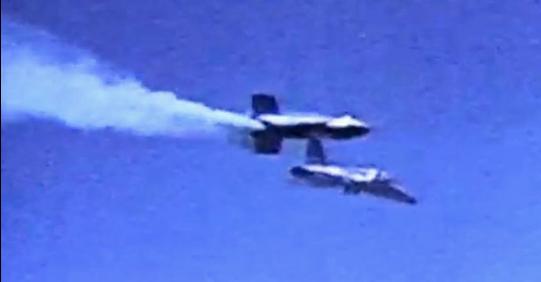 |
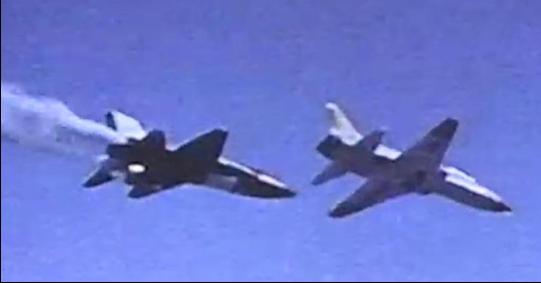 |
|||
Smoke emanates from the engine compartment of X-15 no. 2. NBC News |
The T-38 chase plane stays in tight to give Crossfield crucial information. NBC News |
|||
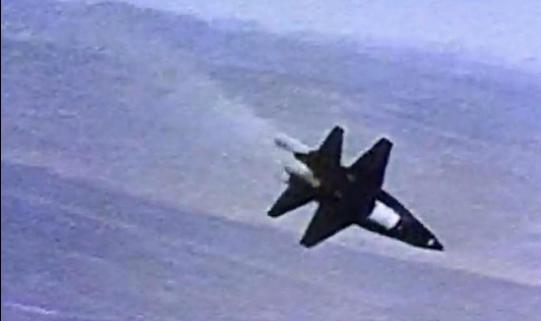 |
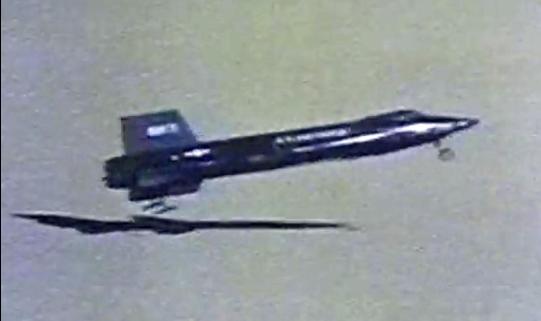 |
|||
The nose-down attitude of the rocket plane prevented proper fuel and oxygider jettison. NBC News |
Moment before the main gear hits Rosamond Dry Lake. NBC News |
|||
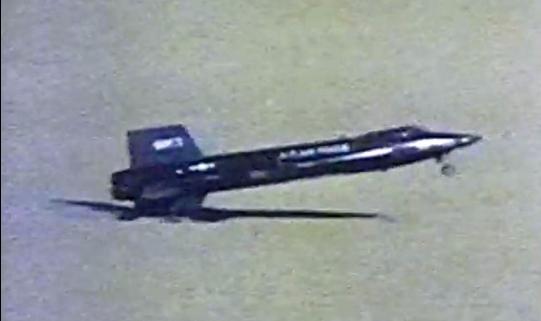 |
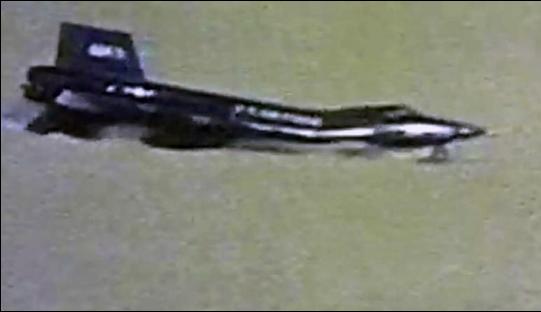 |
|||
At the moment of nose gear touchdown, the strain was too much because of the excessive weight, and the X-15 broke its back not far behind the cockpit. NBC News |
||||
The read skids hit the hard-packed lakebed. The nose gear follows a second later. NBC News |
||||
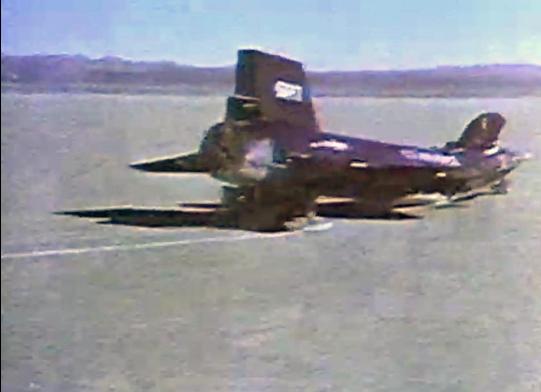 |
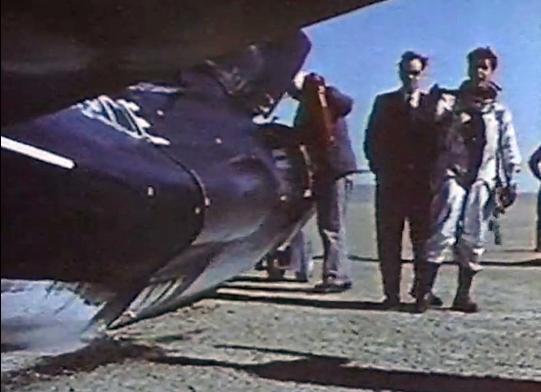 |
|||
Emergency vehicles got to the stricken rocken plane very quickly after touchdown. NBC News |
Crossfield is out of the cockpit, checking out the damage. NBC News |
|||
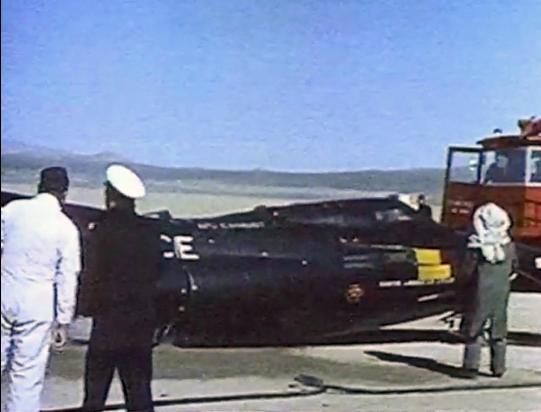 |
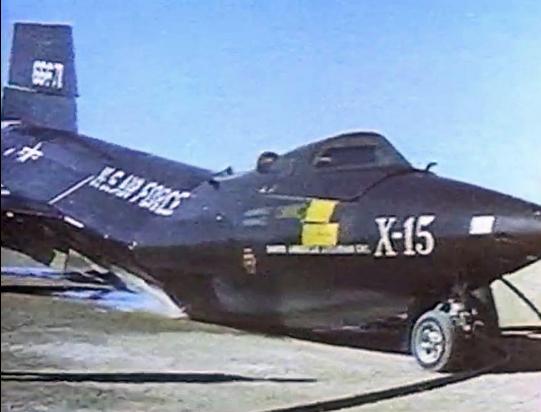 |
|||
The fire truck and emergency personnel make sure there is no fire after landing. NBC News |
A photo showing the damage, along with the fire foam that was sprayed into the break. NBC News |
|||
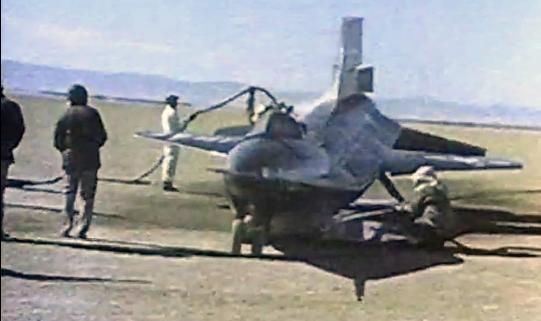 |
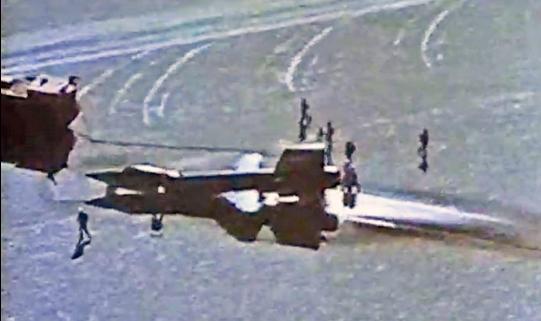 |
|||
Another angle on the broken rocket plane. NBC News |
An aerial view of the crash scene. NBC News |
|||
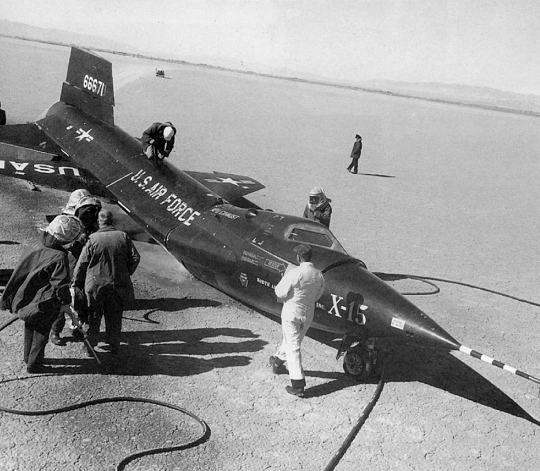 |
 |
|||
Personnel assess the damage. North American Aviation |
The mangled lower LR-11 rocket engine after fire broke out on 5 Nov. 1959. North American Aviation |
|||
 |
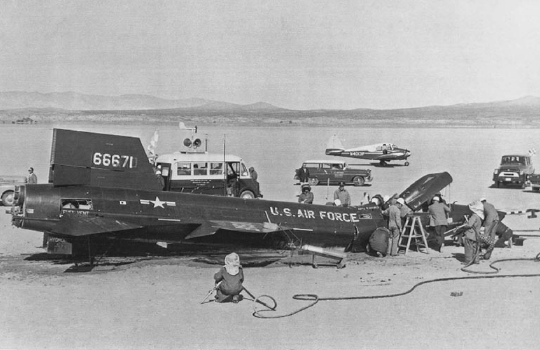 |
|||||
Acccess panels are removed for firefighting, and technicians swarm around the aircraft to make sure all is safe. North American Aviation |
||||||
A dejected Scott Crossfield hung around to witness the aftermath of the accident. North American Aviation |
||||||
 |
 |
|||
An interesting photo of the tail of X-15 no. 2 which shows that the tail number has been changed. "66670," the tail number for the no. 1 aircraft, is clearly visible. North American Aviation |
||||
The crowd gets larger as more people want to be in there checking out the accident. North American Aviation |
||||